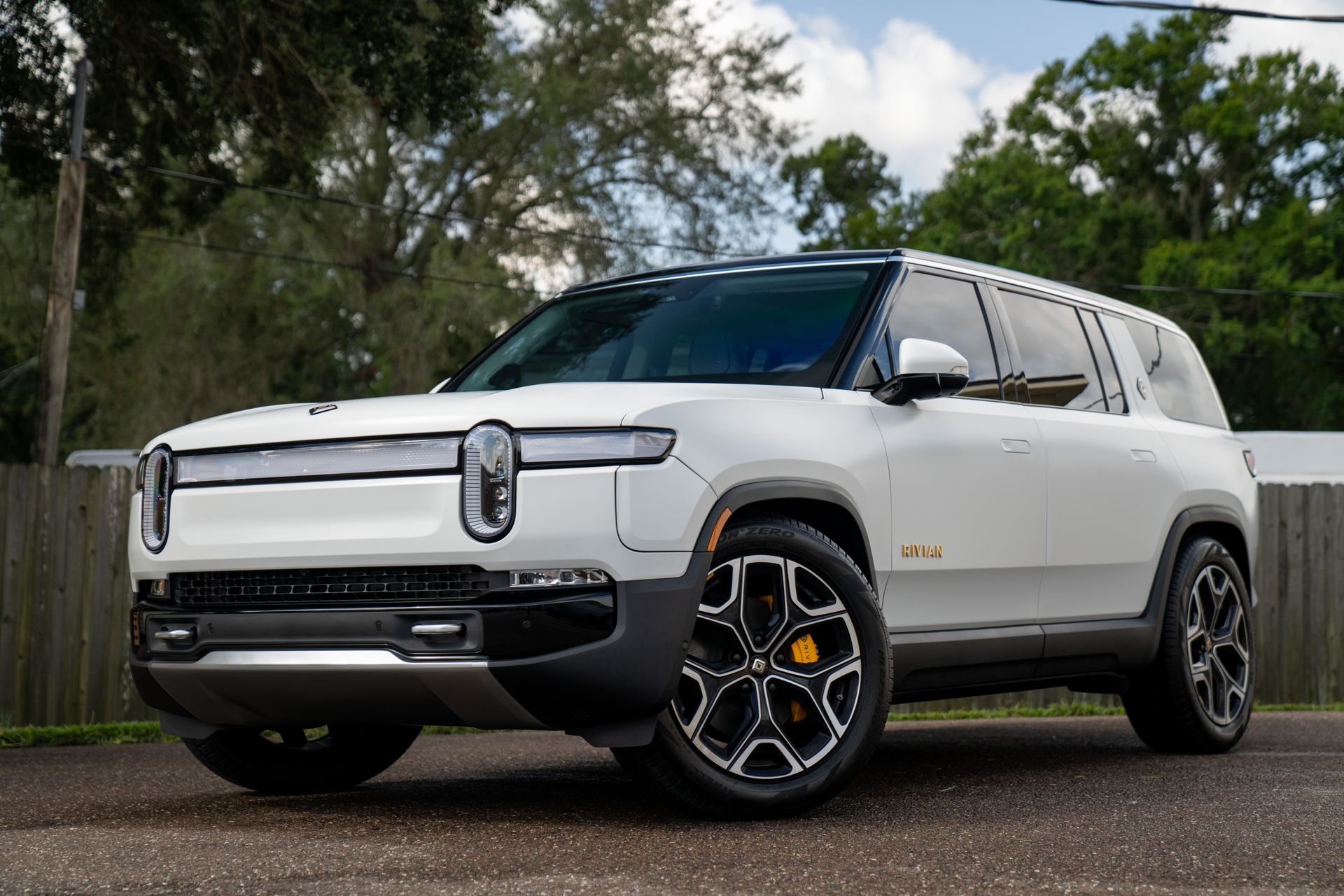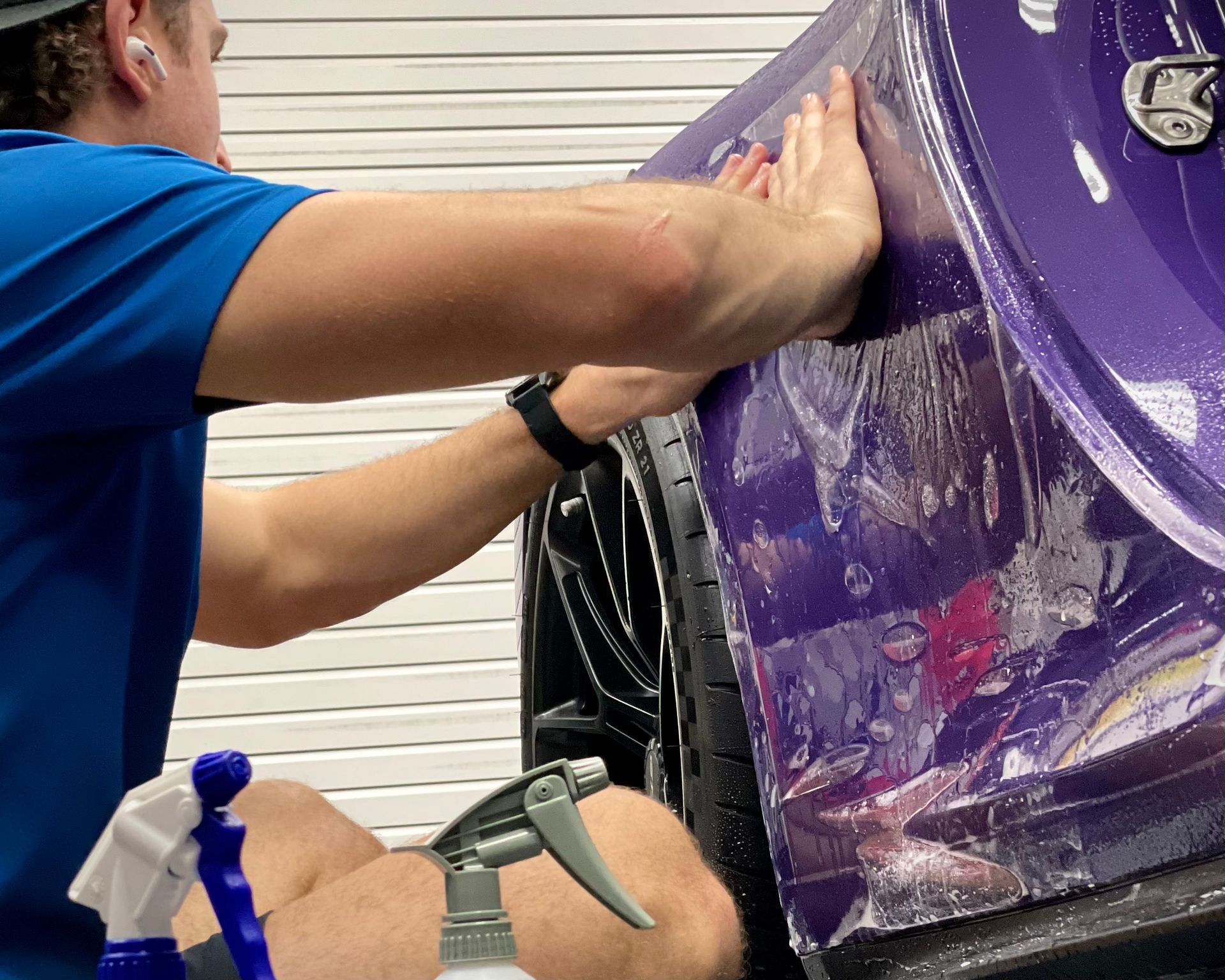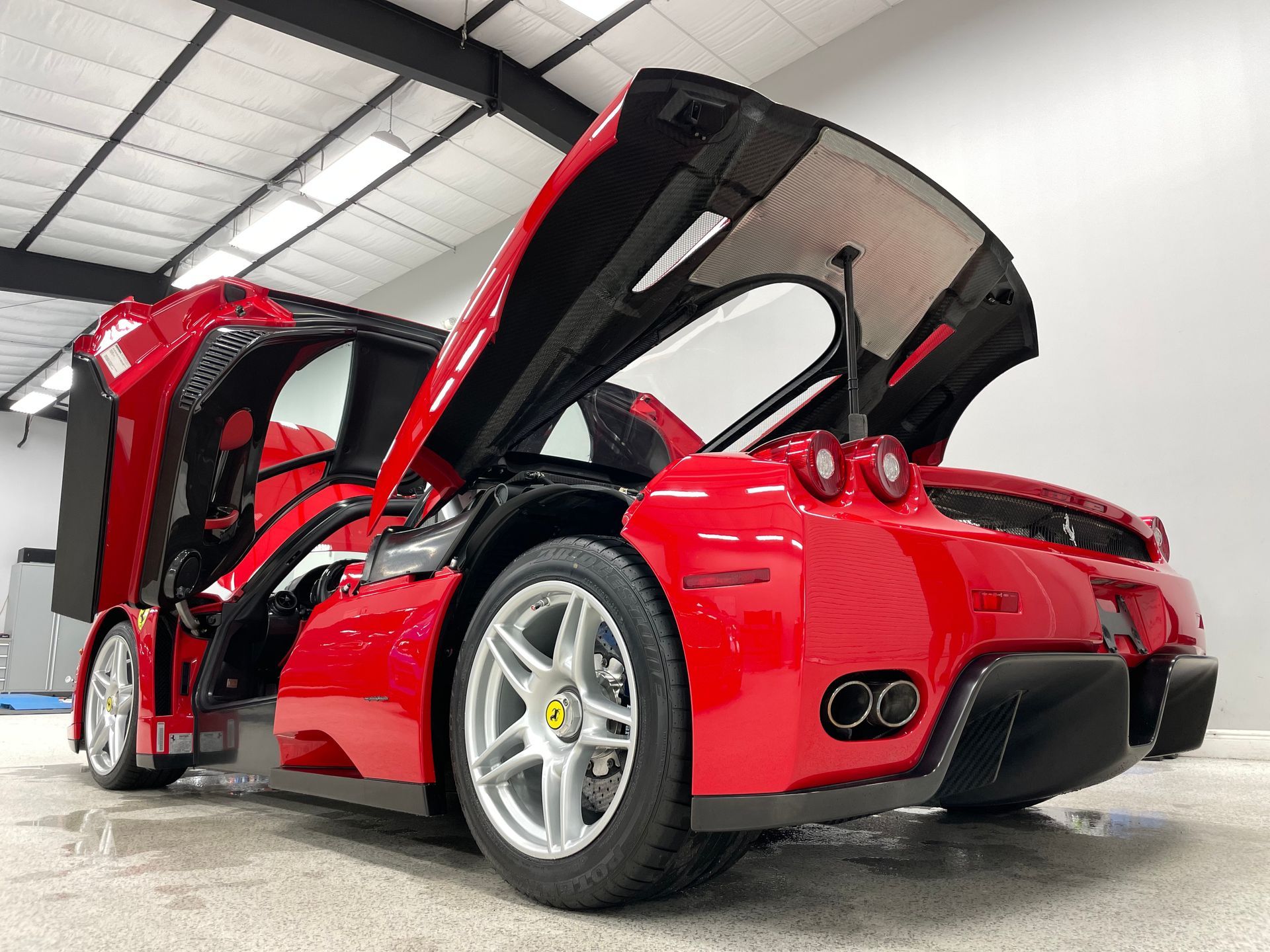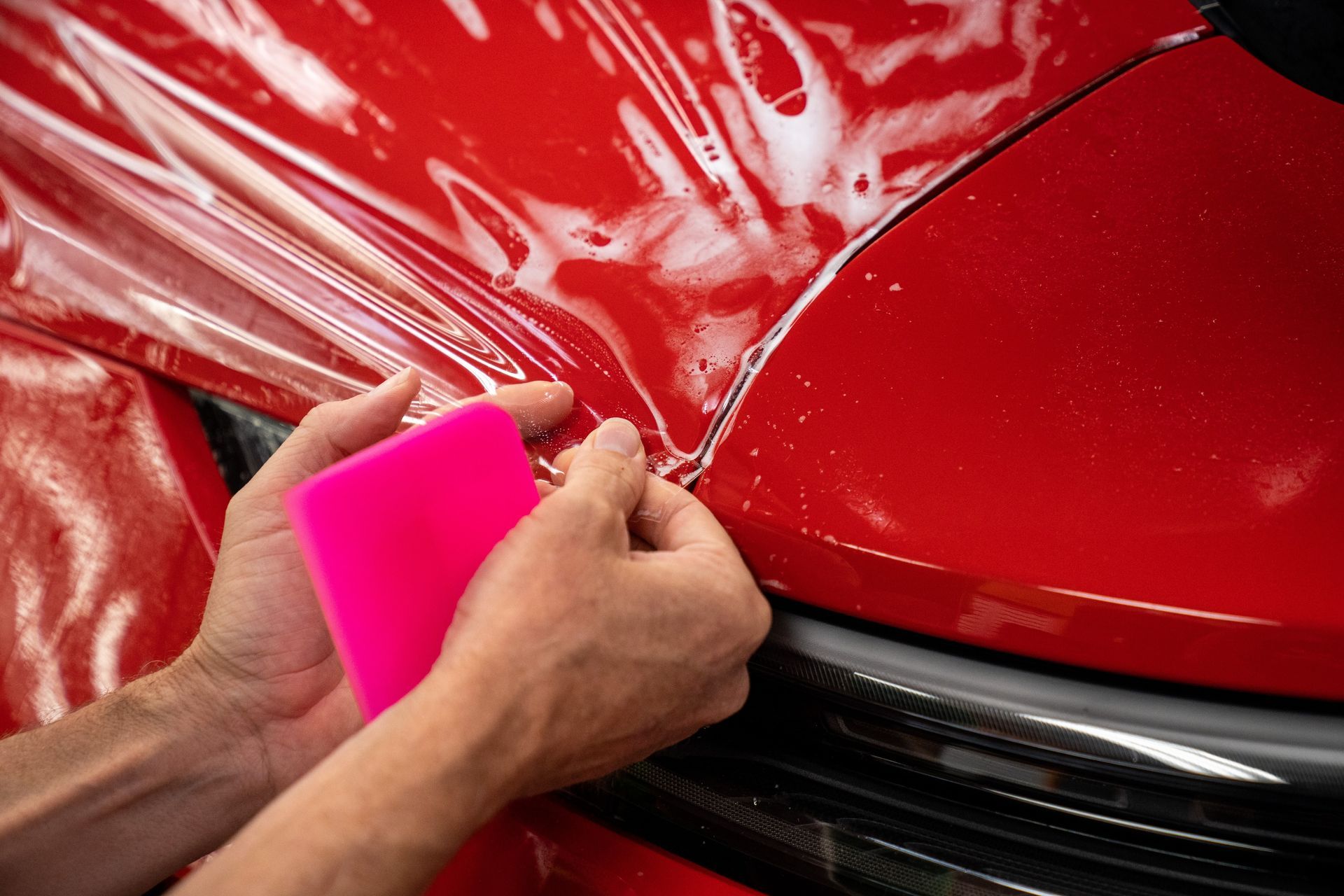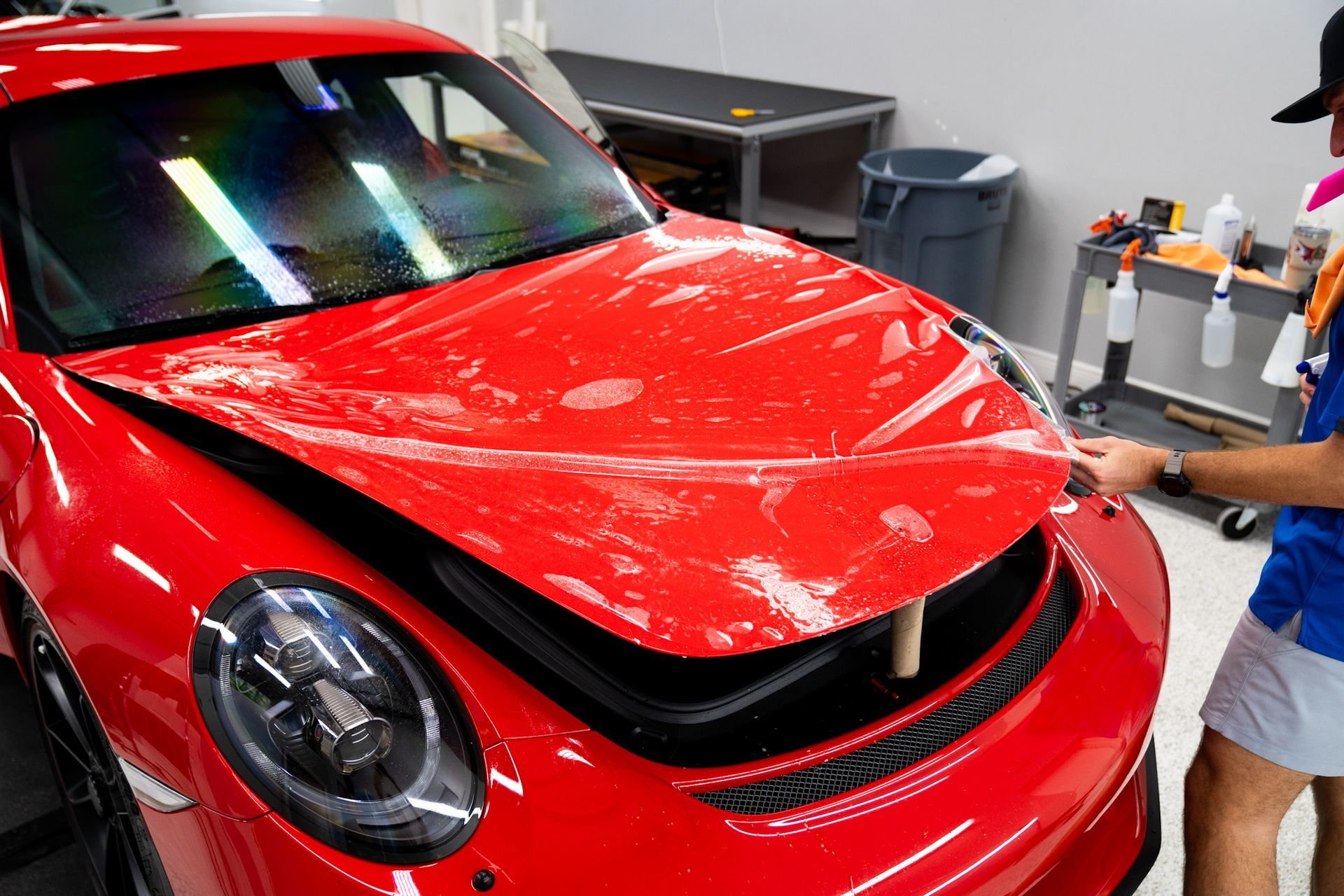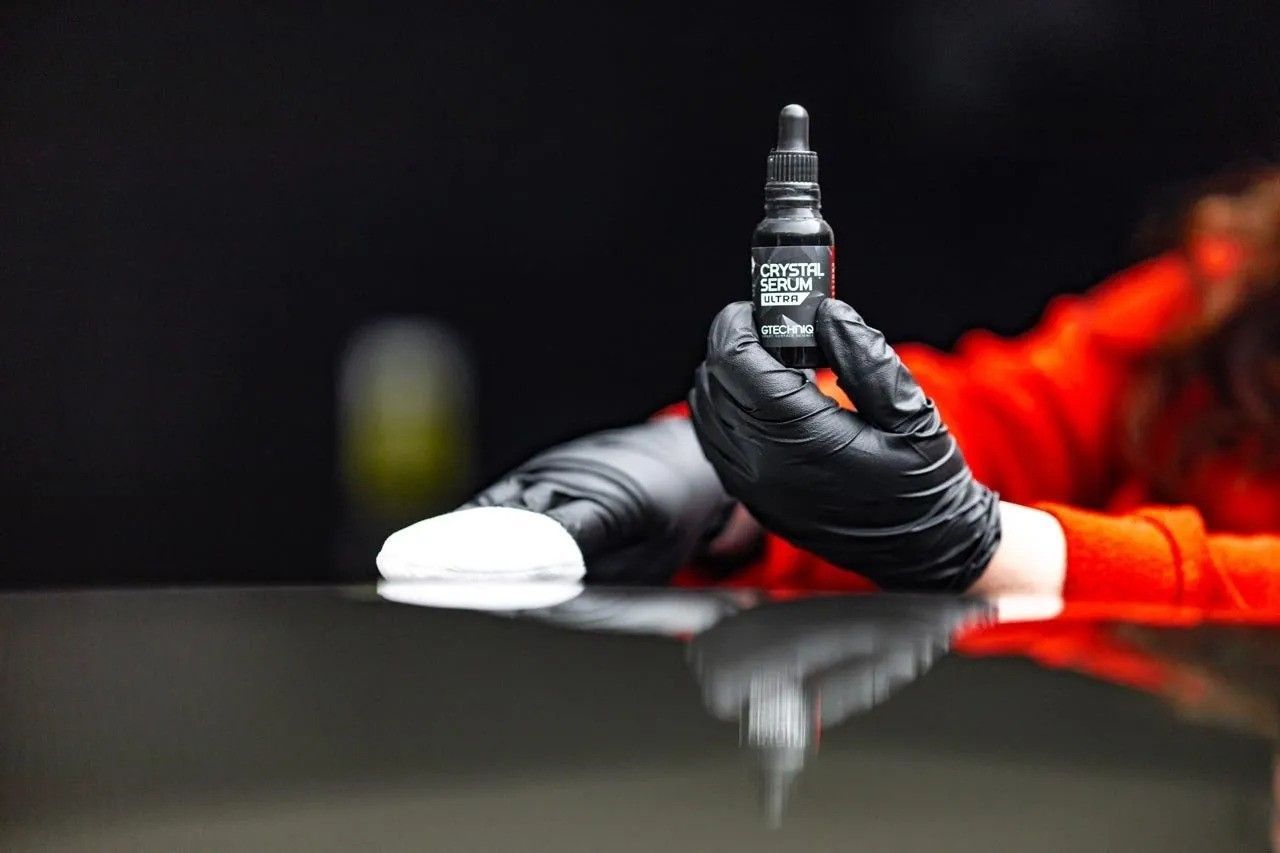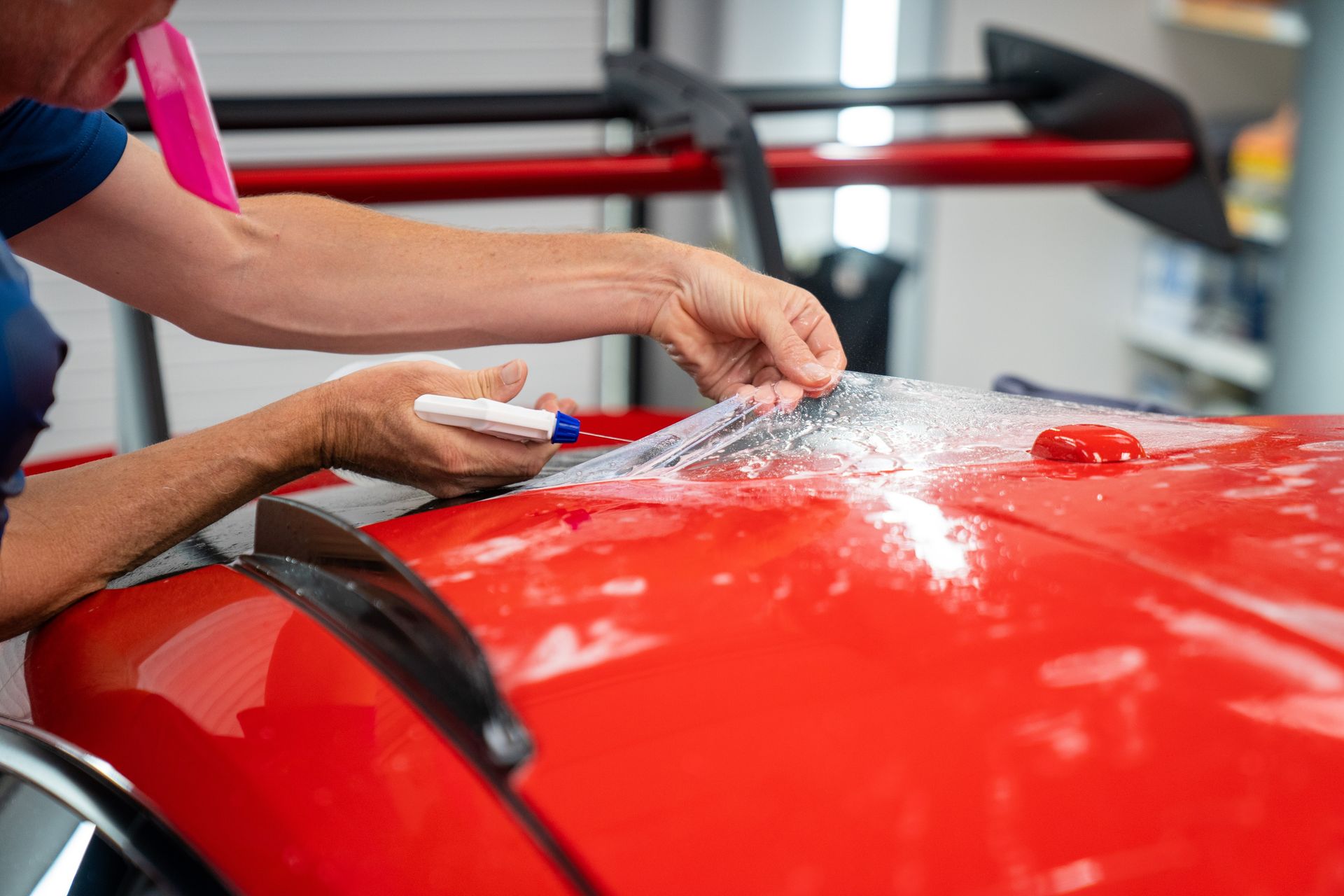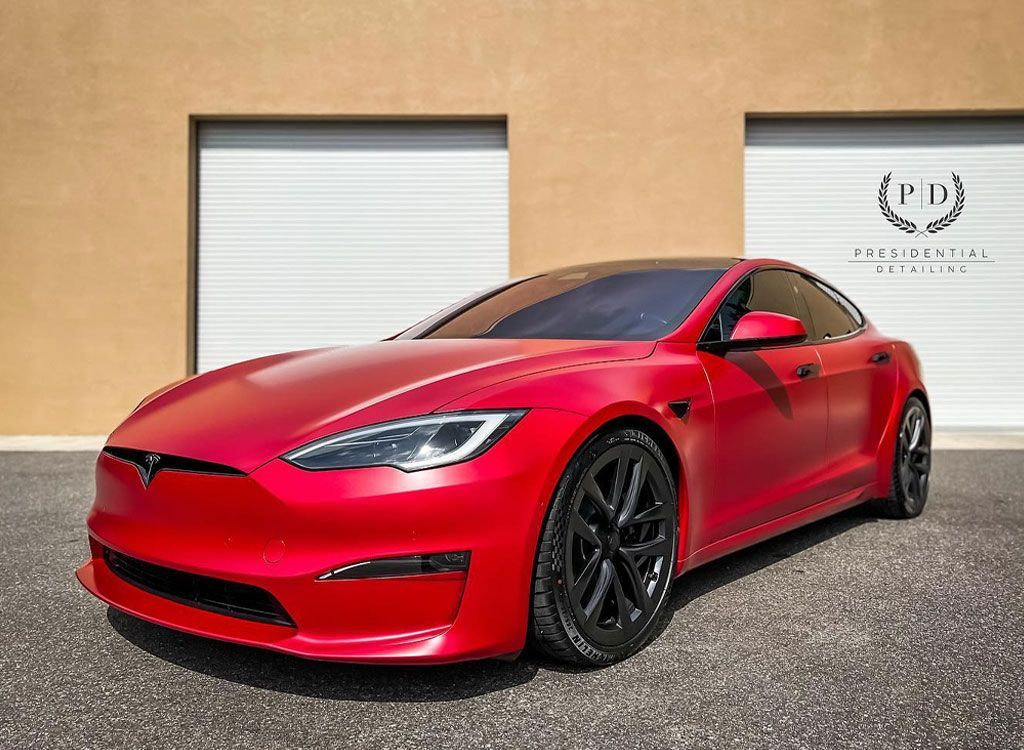How PPF Enhances Your Car's Gloss and Shine: The Ultimate Guide
CALL (813) 723-9679
GET A FREE ESTIMATEA paint protection film is like a clear shield for your car. It safeguards the paint from various forms of damage, ensuring it stays shiny and glossy. Picture this: the paint protection film absorbs the damage before it reaches the paint surface—kind of a superhero for your car's exterior. Your car remains unscathed under its protection. Let's dive into what PPF is all about.
Paint protection film, or clear bra, enhances the gloss and shine of a car by preserving the original paint finish and protecting it from scratches, chips, and UV damage. The PPF-created smooth surface reflects light more evenly, giving the impression of a glossy appearance. Additionally, for further enhancement, some car owners choose to apply ceramic coatings over PPF to maintain and enhance the shine.
What is PPF and How Does it Work?
Imagine a shield that stands between your car's paint and all kinds of harm. That shield is PPF—the paint protection film. It's like an invisible forcefield designed to take the hit instead of your car's paint. This transparent film is made from urethane, which is a really strong type of plastic that can absorb the impact energy from things like stone chips, bug splatter, and minor scratches. Just as your car’s superhero costume—an extra layer of protection to keep it safe from everyday dangers. When a small stone flies up from the road or a bug decides to kamikaze into your car, they hit the PPF instead. The film absorbs the energy, leaving your paint untouched. It's like having a personal bodyguard for your car!
How PPF Works
- Impact Resistance: The urethane material used in a paint protection film has exceptional impact resistance, so when something hits it, the film flexes and takes the hit.
- Self-Healing Properties: It also has self-healing properties, meaning that light scratches on the surface will disappear when exposed to heat—like when you park in the sun.
With a paint protection film in place, high-impact areas like the hood, fenders, and side mirrors are shielded from damage. A paint protection film itself doesn't make your car's paint shinier directly, but here’s how it indirectly contributes: When applied correctly, PPF creates a smooth surface that reflects light more evenly than regular paint. This gives off the impression of a glossy appearance. Plus, a paint protection film preserves the original shine of your vehicle's paint by protecting it from scratches, chips, and UV damage. So, apart from safeguarding your car from dings and blemishes, PPF can enhance the depth and clarity of its finish—especially if your car has a high-quality glossy paint job.
Step-by-Step Guide to Applying PPF
Applying paint protection film requires precision and care to ensure a flawless appearance and optimal protection for your vehicle. It is recommended to have a professional install a PPF. Let's break down the process of PPF application into simple steps:
- Step 1: Surface Preparation - Before applying the paint protection film, the vehicle's surface must undergo thorough cleaning and drying. Any dirt, wax, or residue can interfere with the adhesion of the PPF, which can lead to imperfections and reduce its effectiveness in protecting the paint. It's crucial to use a pH-neutral car wash soap and water for cleaning, ensuring that no contaminants are left behind. This step prepares the surface for the PPF application by creating an ideal environment for proper adhesion. Regular cleaning results in a smooth and even surface, allowing the paint protection film to adhere seamlessly without any inconsistencies. Proper surface preparation sets the stage for a successful PPF installation.
- Step 2: PPF Application - The next step involves carefully applying the paint protection film to the desired areas of the car. Professional installers utilize specialized techniques to ensure a precise fit that eliminates air bubbles and maintains a clear, seamless finish. During this process, attention to detail is essential. The installer must work meticulously to align the PPF with the contours and edges of the vehicle to achieve a perfect fit. Professional installers at Presidential Automotive Detailing specialize in precise paint protection film application, utilizing their expertise to ensure a high-quality finish.
- Step 3: Trimming and Smoothing - Once the paint protection film is applied, excess material needs to be trimmed away, and any remaining edges need to be smoothed out for a uniform appearance. This step requires patience and precision, as it ensures that the film adheres uniformly to the vehicle's curves and contours. Skilled installers pay close attention to this trimming and smoothing process, ensuring that there are no overlaps or gaps in the film. By following these meticulous instructions, you can be sure that the PPF's effective paint protection will give your car a smooth, flawless finish.
These detailed steps showcase the level of craftsmanship involved in achieving a professional-grade installation of paint protection film, making it hard for DIY enthusiasts to achieve the same level of results.
PPF and Enhanced Gloss and Shine
So, you've decided to protect your car with paint protection film and are curious about how it can enhance your car's appearance. It's crucial to understand that PPF doesn't directly make your car shinier, but it plays a pivotal role in preserving the original shine and luster of your vehicle's paint. When you apply a paint protection film to your car, it creates a protective layer that shields the paint from scratches, chips, and harmful UV damage. While this protection is vital for maintaining the integrity of your car's finish, there's another benefit that contributes to its enhanced gloss and shine. The smooth surface of PPF reflects light more evenly than unprotected paint, giving the impression of a glossy appearance. This means that when sunlight or artificial light hits your car, it bounces off the PPF, creating a stunning glossy effect that can catch anyone's eye.
Moreover, paint protection film ensures that environmental factors won't tarnish your car's appearance over time. By acting as a shield against pollutants, contaminants, and harsh weather conditions, PPF prevents premature fading and discoloration. Thus, your car will continue to gleam and sparkle like it did on day one, even after years of use. It's important to remember that regular cleaning plays an essential role in maintaining the shine of a car with PPF. Using mild soaps and avoiding harsh chemicals during cleaning will ensure that the protective layer remains in optimal condition.
The Role of PPF in Surface Protection
Imagine your car's outer layer exposed to all the elements every time you take it for a spin. Road debris, bird droppings, insect acids, and even harmful UV rays—these are just a few of the many environmental pollutants waiting to take a toll on your vehicle's paint job. These offenders not only diminish the visual appeal of your car but also compromise its structural integrity over time. This is where a paint protection film steps in as a silent guardian, offering an invisible shield that maintains the original shine and gloss of your car’s finish. It acts as a vigilant barrier against the onslaught of contaminants, preventing them from causing damage while ensuring the paint retains its brilliance for years to come.
Think about it like this: Your car wears invisible armor that shields it from environmental attacks without compromising its sheen or attractiveness. A paint protection film prevents discoloration, erosion, and chemical stains, making sure the underlying paint remains shiny and lustrous. The protection offered by PPF extends beyond physical contaminants to combat the detrimental effects of UV radiation. The sun's rays can be harsh on paint, fading its color over time. PPF provides reliable UV protection that safeguards against discoloration caused by prolonged sun exposure, preserving your car's aesthetic appeal year after year.
In essence, paint protection film is not just about maintaining a glossy exterior; it's about ensuring that your vehicle stands strong against the rigors of daily use and environmental exposure. It's a wise investment in preserving your car's appearance while protecting it from the unavoidable wear and tear that comes with being out on the road.
PPF vs. Traditional Wax Coating
When it comes to maintaining the gloss and shine of your car, traditional wax coatings have been a go-to solution for many years. They provide an immediate enhancement to the car's appearance, offering a glossy finish that catches the eye. However, this shine is temporary and requires regular reapplication and upkeep to maintain. In contrast, paint protection film acts as a long-term shield for your vehicle's paint, safeguarding it from damage caused by environmental factors such as UV rays, rock chips, and scratches. This not only preserves the glossy finish but also reduces the need for frequent waxing.
Now, when we talk about gloss enhancement and durability, paint protection film emerges as a clear winner over traditional wax coatings. PPF provides gloss and has a durability of around 5 years. On the other hand, traditional wax coatings typically last for approximately 6 months before they need to be reapplied. The reason behind this stark contrast lies in the protective nature of paint protection film. While traditional wax coatings primarily offer cosmetic enhancement, they don't provide substantial protection against environmental factors that can dull a car's shine over time.
Another key factor to consider is maintenance. PPF requires minimal maintenance, especially when compared to traditional wax coatings that demand regular reapplication and upkeep. This makes paint protection film a more convenient choice for individuals who value low-maintenance solutions when it comes to preserving their vehicle's glossy finish. When it comes down to costs, it's true that applying PPF is approximately 3-4 times more expensive than traditional wax coating initially. However, the longevity and superior protection offered by this film make it a cost-effective choice in the long run.
In essence, while traditional wax coating may offer an initial shine, it pales in comparison to the long-term protection and enhanced gloss provided by paint protection film. With its ability to preserve the glossy finish for longer periods and decrease the need for frequent waxing, PPF stands out as the superior choice for individuals seeking a durable, low-maintenance solution to maintain their vehicle's shine.
Top-Notch Paint Protection Film Solutions in Tampa, FL
Transform your car's appearance and protect its paint with Presidential Automotive Detailing's
top-notch paint protection film solutions in Tampa, FL. Our expert team specializes in providing high-quality PPF installations that not only shield your vehicle from scratches, chips, and environmental damage but also enhance its gloss and shine. With our meticulous attention to detail and commitment to excellence, you can trust us to deliver superior results that exceed your expectations. Elevate your car's appearance and preserve its pristine condition with Presidential Automotive Detailing's premium paint protection film services. Schedule your appointment today and experience the difference for yourself. Call us at
(813) 723-9679 to get started!

